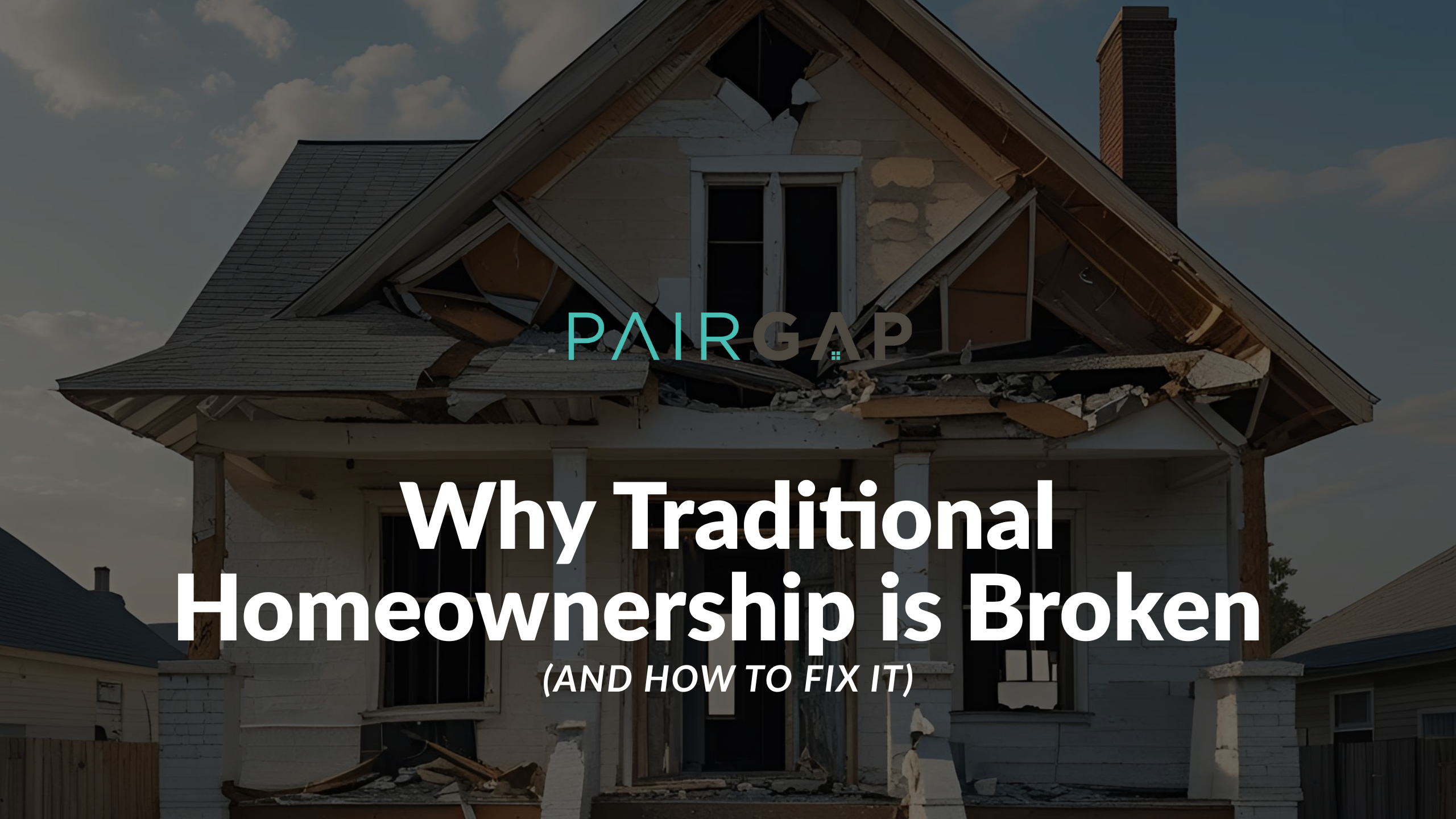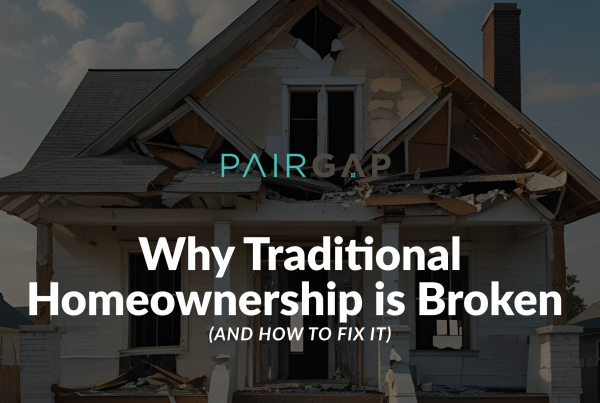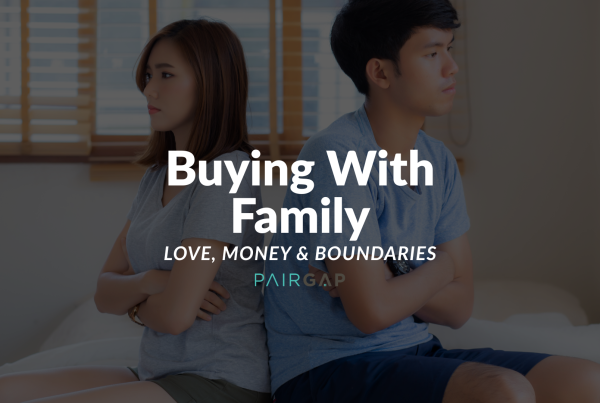
Let’s just say it, the old way of buying a home is broken.
It was built for a different generation. One with job security, two-income households, and homes that cost 3x your salary, not 10x. But times have changed, and the system hasn’t. Meanwhile, millions of people are working hard, saving what they can, and still getting priced out of the American dream.
At Pairgap, we’re not waiting around for that system to fix itself. We’re building something better. Something rooted in access, equity, and shared success.
The Flaws in the Current Homeownership Model
The traditional homeownership model assumes:
-
You’re married with two incomes
-
You work 2 jobs
-
You’ve got a 20% down payment saved
-
You’ve got perfect credit and zero student debt
Sound familiar? Probably not. Because that’s not most people’s reality in 2025.
Today’s buyers are different. They are single freelancers, creatives and entrepreneurs. Many carry student debt and live in cities where even a starter home costs half a million. In fact, 35% of Americans live doubled up, but the real estate system hasn’t caught up. Agents, lenders, and legal frameworks are still operating like it’s 1995.
No tools for co-buying. No flexibility for non-traditional income. No pathways for collaborative ownership.
That’s where Pairgap comes in. We’re building the structure the system should’ve had all along, for how people actually live, work, and invest today.
The Impact of Rising Costs on Homebuyers
Let’s talk numbers:
-
Median home prices have jumped 45% in the past five years.
-
Mortgage rates are the highest they’ve been in over a decade.
-
Rent is rising faster than wages, leaving little room to save.
Families are stretched. Young professionals are stuck renting. And the idea of “just save more” is laughable when the goalpost keeps moving.
Housing has become a luxury, not a right.
That’s why more buyers are turning to co-ownership to team up, share costs, and make owning possible again.
How the System Favors Investors Over First-Time Buyers
Let’s call this out too. The market is rigged.
Corporate Investors, backed by cash and algorithms, are sweeping up inventory before everyday buyers even get a chance. They’re turning homes into short-term rentals, flipping properties, and driving up prices for everyone else.
-
Bidding wars? Investors.
-
All-cash offers? Investors.
-
Neighborhoods full of Airbnbs? Yep, investors.
The result? First-time buyers can’t compete, and wealth continues to consolidate at the top.
Pairgap flips that. We help everyday people combine buying power so they’re not outbid, outspent, or outmaneuvered.
Innovative Solutions to Revitalize Homeownership
We can’t fix the system with the same tired tools.
We need bold, people-first innovation. Here’s what’s working:
-
Co-buying models like Pairgap that allow people to buy together
-
Digital agreements and real estate prenups that protect everyone involved
-
Matching tools that go beyond listings into financial readiness and compatibility
We’re building a movement of intentional buyers ready to create new paths to ownership together.
The Role of Technology in Transforming Home Buying Experiences
Tech should make things easier, not more confusing.
At Pairgap, we use tech to:
-
Match co-buyers based on financial and lifestyle compatibility
-
Guide the process with readiness tools, calculators, and legal templates
-
Streamline ownership with real estate prenups, detailed dashboards, and partner networks
It’s not about flashy apps. It’s about tech that removes friction, builds trust, and helps people close with confidence.
Because buying a home shouldn’t feel like decoding a foreign language.
What You Can Do to Advocate for Change in Housing Policy
The fix isn’t just private. It’s public too.
We need housing policies that reflect today’s reality, not yesterday’s America Dream. Here’s what you can do:
-
Speak up at local planning board meetings
-
Support shared housing initiatives
-
Push for zoning reform and anti-displacement protections
-
If you have shared ownership experience, share it because data is powerful, but lived experience drives change


